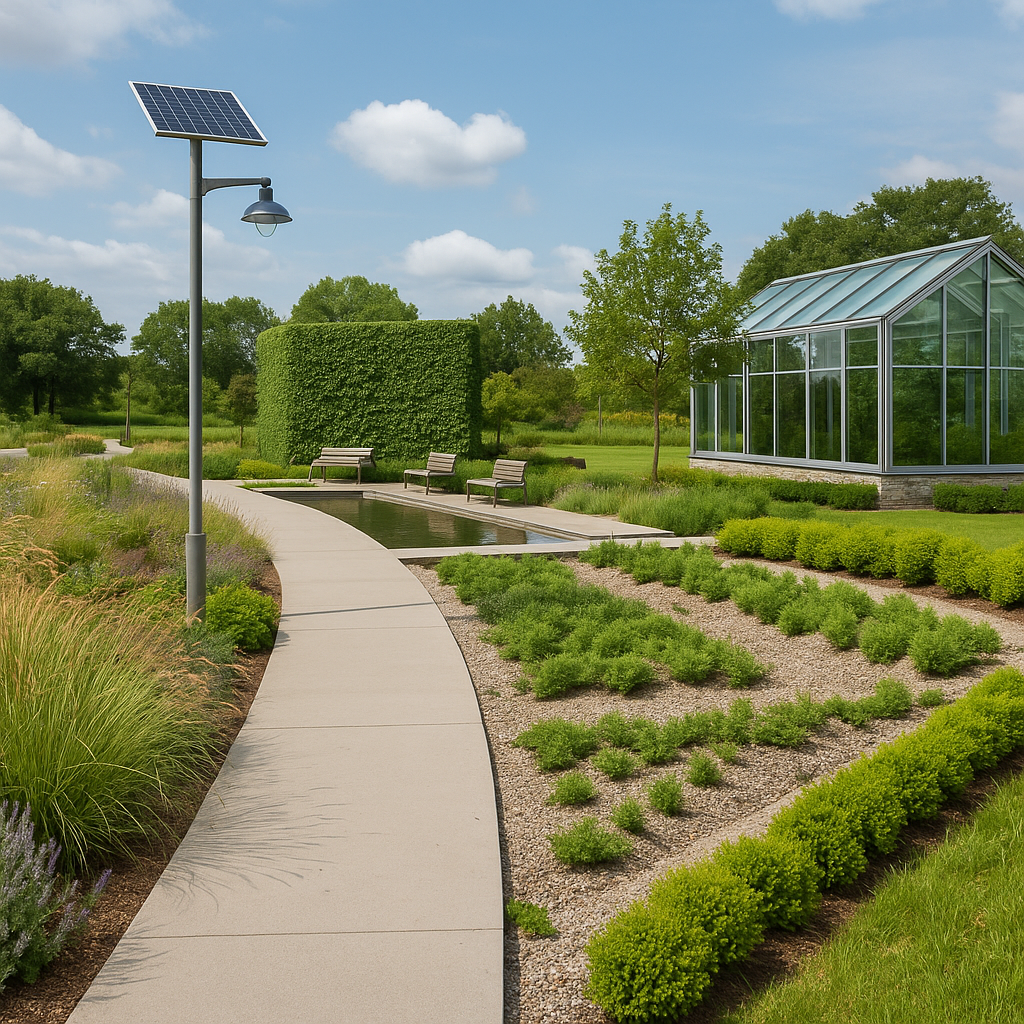To define landscape today is to go beyond decoration and aesthetics. For planners, landscapes are not just about beauty—they are about function, sustainability, and long-term community value. Urban and regional planners, in particular, must think holistically, ensuring that green spaces provide ecological benefits, social inclusion, and resilience against environmental challenges.
In this article, we explore how planners define landscape within sustainable design. We’ll look at the elements and principles they apply, the importance of collaboration across professions, and the role of tools, technologies, and eco-conscious materials in shaping landscapes that serve both people and the planet.
What It Means to Define Landscape in Planning
When planners define landscape, they see it as a system of relationships:
- Ecological – supporting biodiversity, clean air, and water management.
- Social – providing inclusive, safe, and accessible public spaces.
- Cultural – preserving heritage and expressing identity.
- Economic – increasing property value, encouraging tourism, and reducing long-term maintenance costs.
This broader perspective ensures that landscapes contribute not only to visual appeal but also to the overall sustainability and well-being of communities.
Core Elements of Landscape in Planning
Space: Allocating Purpose
Planners analyze space at the city scale. Parks, plazas, and corridors must connect people, wildlife, and transportation systems. Unlike residential design, urban space allocation balances competing priorities such as recreation, stormwater management, and ecological restoration.
Line: Structuring Movement
Lines in planning define how people and vehicles move through environments. Pathways, boulevards, and green corridors must create both efficiency and experience. This mirrors ideas from Architects Define Landscape Integration in Urban Planning, where lines tie architecture and landscapes into a cohesive urban fabric.
Form: Building Identity
The form of public landscapes—whether a circular plaza or a linear park—shapes community interaction. Sculptural plantings, water features, and architectural elements act as visual anchors, giving spaces recognizable identity.
Texture: Layering Environments
Texture adds richness to urban landscapes. Smooth stone plazas, rough bark trees, and reflective water surfaces all create multisensory experiences. Durable materials, shaped through techniques like stone fabrication, remain essential for long-term resilience.
Colour: Communicating Mood
Planners use colour strategically. Vibrant plantings can energize plazas, while muted tones in business districts support professionalism. Seasonal variation ensures landscapes remain visually engaging year-round.
Principles of Landscape Planning for Sustainability
Planners also apply design principles on a larger scale:
- Balance: Distributing green spaces equitably across districts.
- Proportion: Ensuring plazas, walkways, and seating areas serve people comfortably.
- Rhythm: Using repeated elements—tree lines, lighting, benches—for continuity.
- Emphasis: Creating focal points like fountains, public art, or civic gardens.
- Unity: Integrating green systems with surrounding architecture and culture.
These principles ensure that landscapes are more than patchworks of greenery—they become intentional, harmonious systems.
Defining Value Through Sustainability
Ecological Value
Sustainable landscapes mitigate urban heat, manage stormwater, and provide habitats. Green roofs and rain gardens are no longer optional—they are essential.
Social Value
Inclusive design ensures spaces serve all ages and abilities. Parks with accessible paths, shaded seating, and cultural features enhance social cohesion.
Economic Value
Well-planned landscapes reduce long-term costs by minimizing irrigation, energy use, and maintenance. They also raise real estate value and attract investment.
Cultural Value
Landscapes often express community identity through native planting, heritage preservation, or public art. This builds pride and continuity.
Tools and Technologies Supporting Sustainable Planning
Even at the planning level, tools and equipment matter.
Vacuum Lifters for Glass Features
Modern landscapes often integrate glass structures—pavilions, greenhouses, or transparent barriers. Safe installation relies on the vacuum lifter, ensuring efficiency and precision in handling heavy panels.
Forklift Booms for Heavy Materials
Large-scale projects demand movement of stone blocks, beams, and sculptures. The forklift boom helps planners and contractors manage logistics without compromising design intent.
Insulated Glass for Energy Efficiency
Planners also factor energy use into design. Incorporating features like Insulating Glass Unit Benefits for Energy Savings ensures that built environments reduce energy costs while maintaining transparency and light.
Collaboration Across Professions
Planners don’t work in isolation. To define landscape successfully, they collaborate with:
- Architects, who provide frameworks for integration (Architects Define Landscape Integration in Urban Planning).
- Contractors, who execute designs practically and sustainably (Contractors Define Landscape Scope in Professional Work).
- Studios, who refine aesthetics and user experience (Studios Define Landscape Aesthetics for Outdoor Spaces).
This collaboration ensures that sustainability and aesthetics align with practical realities.
Challenges Planners Face in Defining Landscape
- Climate Change: Designing spaces that remain resilient to rising temperatures and extreme weather.
- Urban Density: Balancing the need for green space with limited land.
- Budget Constraints: Ensuring sustainable design is affordable for municipalities.
- Community Expectations: Meeting diverse needs while preserving ecological value.
Planners overcome these challenges by embracing adaptive strategies and prioritizing long-term value over short-term cost.
Seeing Sustainability Through a Planner’s Eye
Planners define landscape with guiding questions:
- Does this space provide ecological benefits beyond aesthetics?
- Is the landscape accessible and inclusive for all?
- How does it contribute to long-term economic efficiency?
- Does it reflect the identity and culture of the community?
- Will it remain resilient and adaptive under climate stress?
By addressing these questions, planners ensure that landscapes deliver more than beauty—they deliver value.
Conclusion: Defining Landscape Value for the Future
When planners define landscape in sustainable design, they balance ecology, society, culture, and economy. Their work ensures that outdoor spaces remain resilient, inclusive, and valuable for generations.
With support from architects, contractors, and studios, planners transform abstract visions into living systems. By using tools like the vacuum lifter and forklift boom, and incorporating innovations like energy-efficient glass, they prove that sustainability is both achievable and essential.
Ultimately, planners define landscape not just as scenery, but as a vital framework for thriving, sustainable communities.

